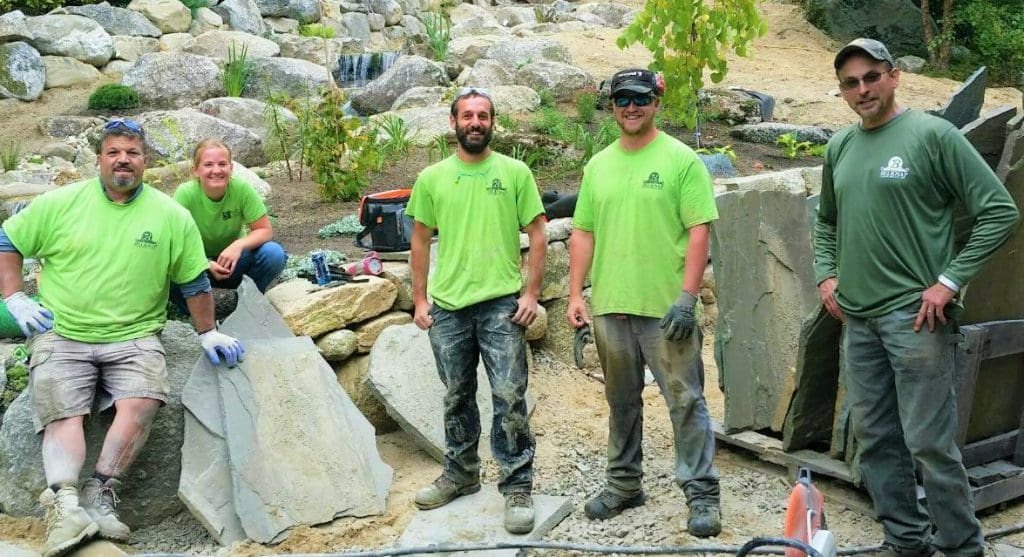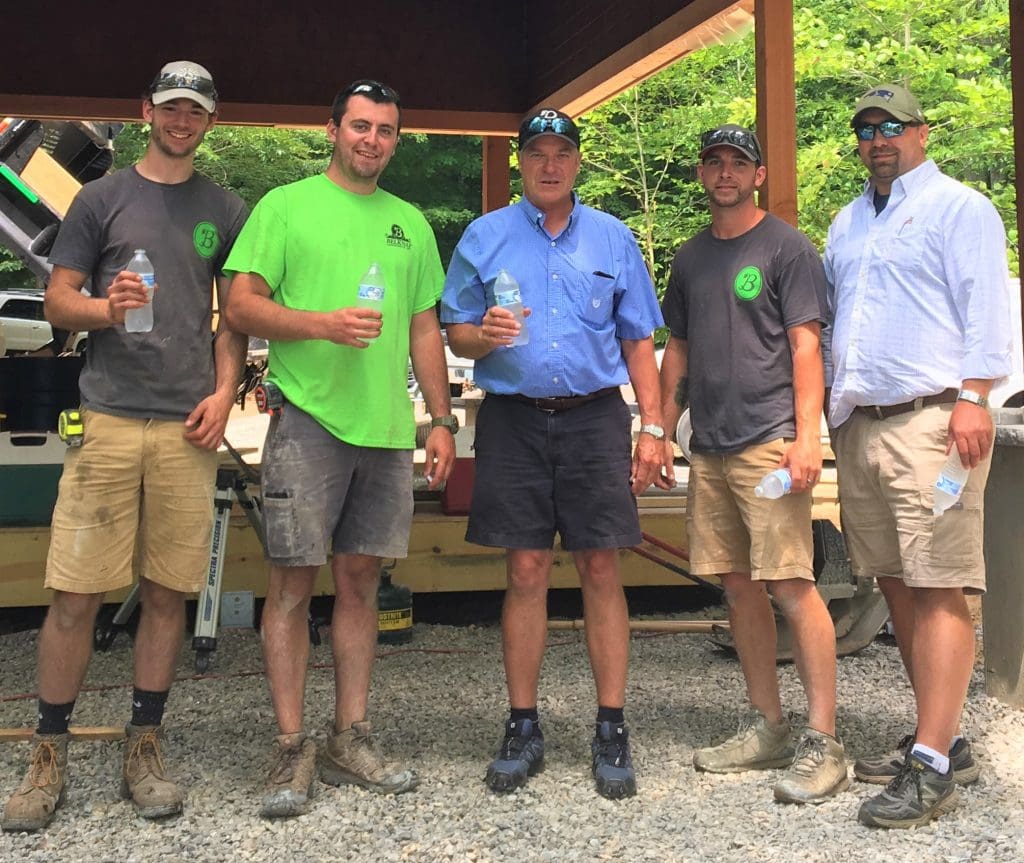
Our Level Up series shares the strategies that help landscape and lawn care companies get to the next level.
Belknap Landscape Company, Inc., based in Gilford, New Hampshire, is currently working toward reaching the $10 million revenue mark, which they feel might be their sweet spot.

“We’ve always strived to be small enough that employees feel like they are part of a close team, but large enough to offer career opportunities for those employees,” says Jeff Sirles, brand coordinator for Belknap. “We’ve yet to reach the scale where we feel we are ‘too big,’ but $10 million seems about right.”
While $10 million is the company’s current goal, Sirles says it’s still possible they’ll grow beyond that mark.
“The thing that would limit us from growing beyond $10 million is we want to be large enough to offer opportunities, but we don’t want to be so large that the company doesn’t feel like it’s family-owned and operated,” Sirles says. “We don’t want the company to be unwieldy.”
Keys to Growth
Belknap was founded in 1988 by Hayden McLaughlin. The company started out with eight employees and now employs around 90 team members in the summer season. Since the first couple of years in the business, Belknap has grown around tenfold.
“We’ve been fortunate enough to operate in an area that has sustained healthy growth for the past several decades,” Sirles says. “We made sure we were prepared to capitalize on this general growth.”

Aside from operating in a market that has supported their growth, Sirles says Belknap has added new services over the years that have contributed to their expansion. Originally, the company was primarily a landscape design and construction firm that did select maintenance services. Now the maintenance division accounts for nearly half of Belknap’s gross sales.
Around 15 years ago they also added a tree services division when they saw the need for it.
“When we would try to outsource trees sometimes nobody could come to do a job for you because they’re booked four or five months out,” Sirles says. “You start seeing that there might be demand outpacing supply here and tree service isn’t that big of a leap from landscaping so that’s when we decided to make that decision to move into that industry.”
Some of the other services Belknap has added over the years are commercial property maintenance and organics. Sirles says they’re still in the early phase of the organic offerings, but that they’ve learned a lot from their peers in LandOpt.
“There are very, very few clients right now that are participating in organics because the important thing that we want to do is get it right before we do an overwhelming launch of organics,” he says.
Doing It the Right Way
Another factor that has helped with Belknap’s growth is the use of NALP’s Landscape Industry Certified program. Sirles says NALP’s certification and membership give them the credibility of a skilled, competent company.

“We use NALP as a way of showing that we are educated and responsible,” Sirles says. “We find that our clients tend to be a little more discerning and so, as a result, we charge them more. If you’re going to charge someone more you need to be able to say things like ‘We’re certified and we’re insured and we practice these safety behaviors and we drug test’ and that sort of thing.”
Sirles says they leverage their NALP certification as a way of showing that they are a professional organization and that they’ve taken the time and effort to go through the training to become certified. He says the OSHA10 training has also helped them.
“This company has really gone through significant efforts to do things the right way even when it’s difficult,” he says. “For example, it’s hard to hire employees for landscaping and say to them we drug test. But we do it because it’s the right thing to do. Or it’s hard to get a certain number of employees OSHA10 certified. But we do it because it’s the right thing to do. If you’re building a business, you really should be looking at and holding yourself to a standard of doing things the right way because, in the long run, it will pay dividends.”
Attracting and Retaining Employees
As the brand coordinator, Sirles is also the head recruiter for Belknap. He says finding skilled labor is a challenge due to the seasonality of the business, but they have been able to attract and retain the employees needed to facilitate, lead and manage growth.

The first thing the company focused on was building a strong company culture.
“We focused on building a company that people are going to want to come to work for,” Sirles says. “And we encourage our employees to refer people because we found that the best employees that we get tend to be referrals because you’re not going to refer someone to work next to you if they’re not a hard worker or a good person. Our employees already know what we’re all about so they’re going to know whether or not somebody fits well.”
He says they have strived to stay small enough where the owner and managers can still have meaningful interactions with all the employees. Maintaining the same leadership staff year over year also reduces the need to “relearn” the culture.

Additionally, Belknap makes sure they’re offering competitive pay, benefits and opportunities to move up in the company.
“What we’ve discovered is sometimes you’ll lose a good person because they’ve outgrown their position and there’s nowhere else to go,” Sirles says.
Every other week, all of Belknap’s employees have a meeting with their supervisor. These meetings will cover topics like job performance, challenges and successes, along with their career path.
“If an employee doesn’t want to move up and they’re fine with their current position, that’s completely fine and acceptable and we respect that,” Sirles says. “For those who want to move up, we do what we can to give them training and educational opportunities to be able to have the skill set they need when the opportunity comes.”
Click here to read more Level Up stories.

